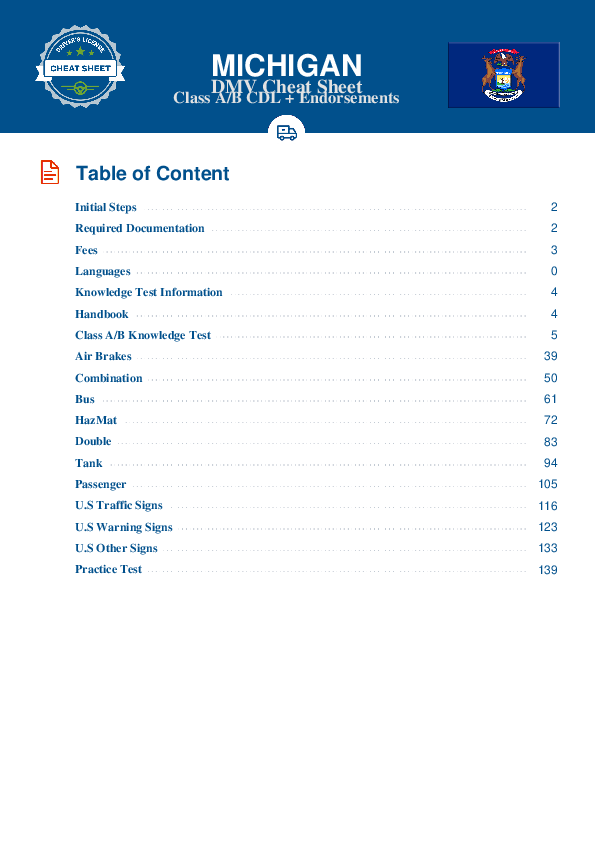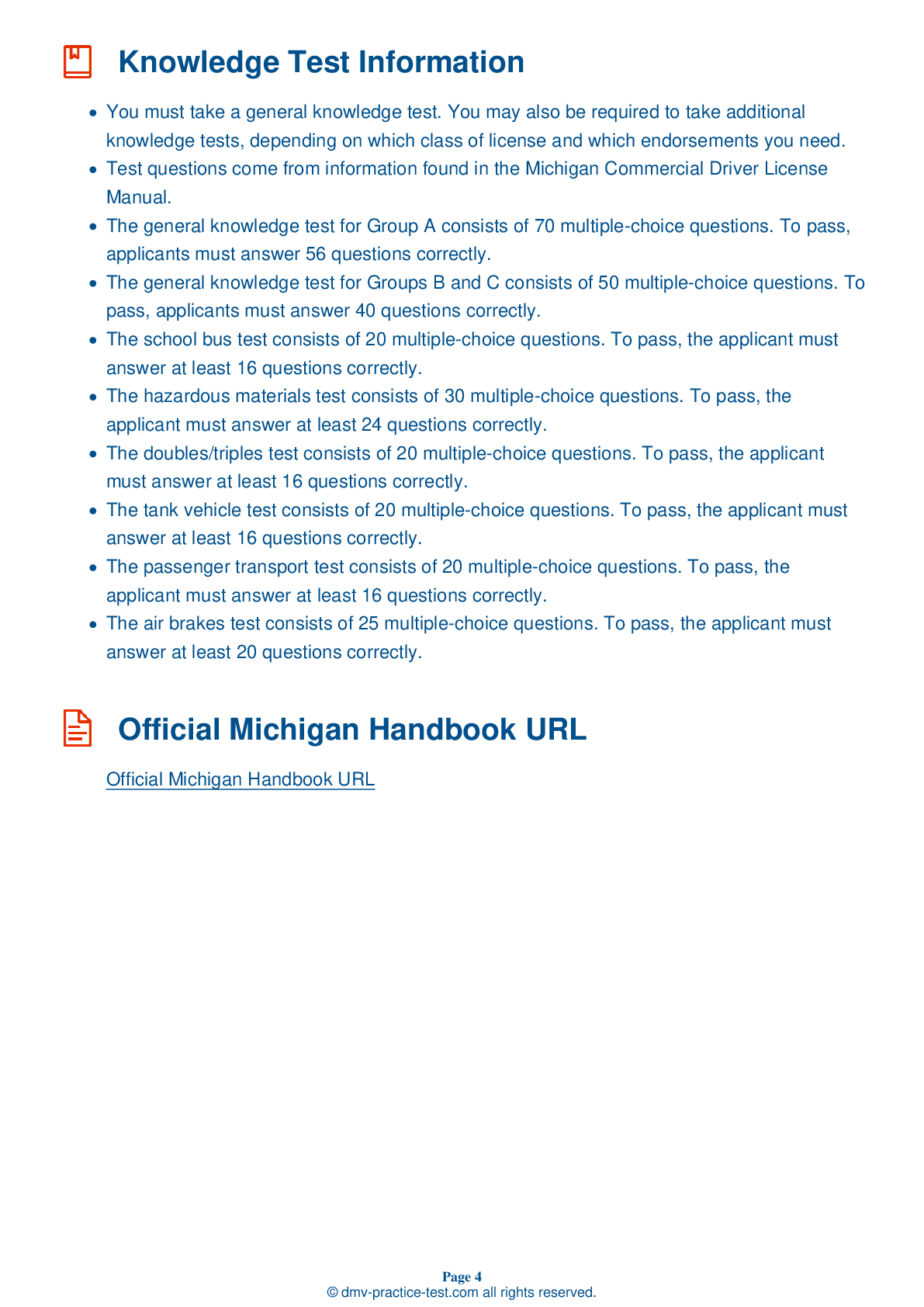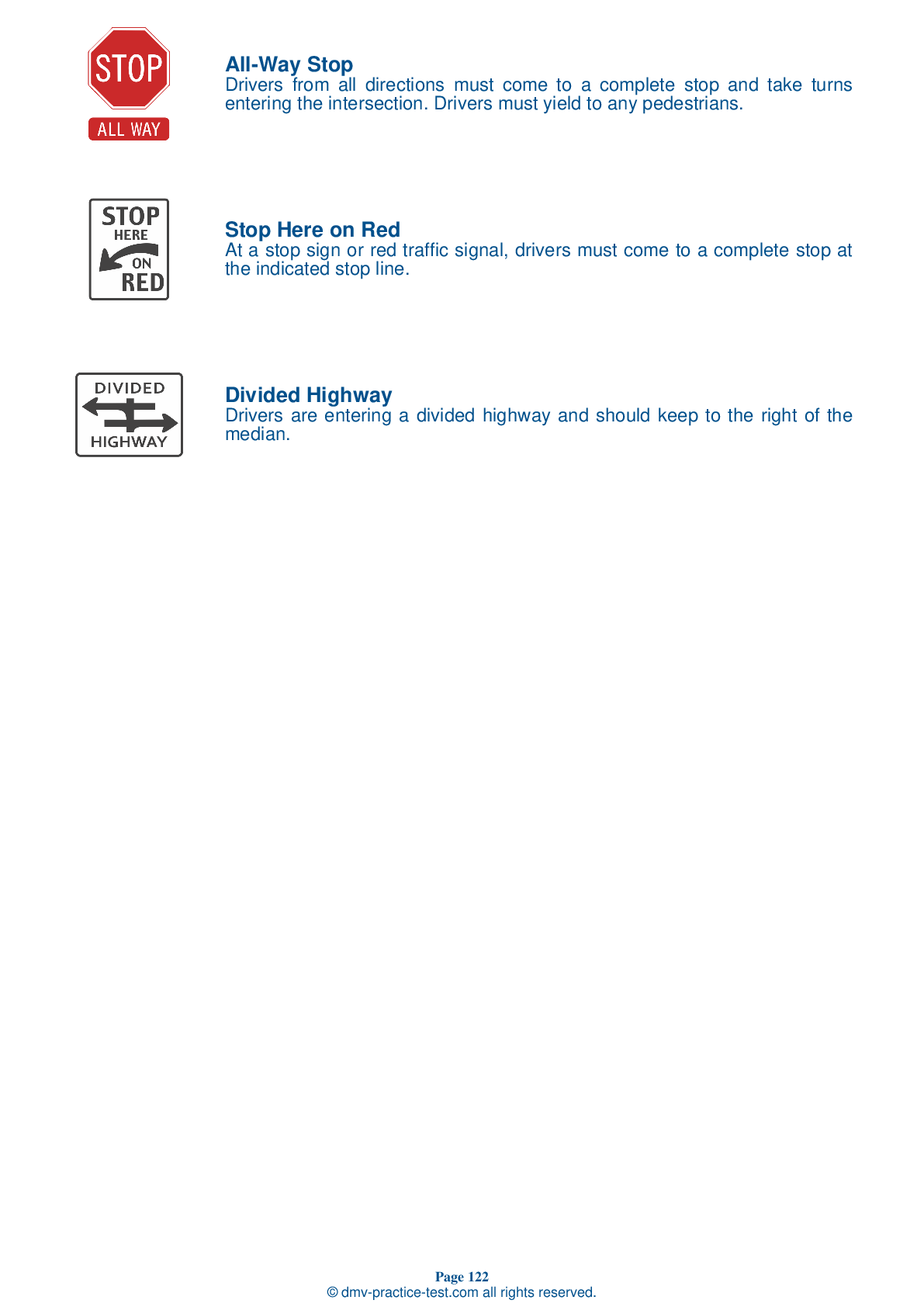Combination Vehicles Practice Test | Michigan 2026 #2
Train for FREE online with our Michigan CDL combination vehicle test. The official exam test consists of several obligatory parts, with all of them checking your knowledge of different blocks of road rules. If you need to obtain a MI combination license in 2026, practice as much as possible. Free sample tests published on our website will help you check and improve your knowledge and boost your grades. Please bear in mind that DMV requirements for issuing a combination license may vary from state to state.
1 . When backing up your tractor while coupling it to a trailer, the trailer brakes should be:
Correctly following the steps to couple and uncouple trailers is vital to safely operating a combination vehicle. Before backing your tractor under the trailer while coupling, make sure your trailer brakes are locked.
2 . A driver should test the tractor protection valve by:
You should test the tractor protection valve by allowing the air supply to properly charge, turning off the engine, then releasing air from the system by pressing the brake pedal several times. The tractor protection valve should move into its emergency position when psi drops to an unsafe level.
3 . During a trip, the ____ should be open.
When starting a trip, be sure that all shut-off valves are in the open position, except for the last valves on the rear trailer. It is important that air reaches the brakes on all trailers and that it is not able to escape from the back of the vehicle.
4 . Rollovers happen when:
Rollovers are caused by operators turning too fast. To avoid rolling over, drive slowly on entrance ramps, on exit ramps, and around corners. Avoid making quick lane changes when towing trailers.
5 . Place the trailer air supply control in its "emergency" position to test:
Be sure to test the trailer emergency brakes before beginning a trip. After ensuring that the trailer rolls freely, you can test the emergency brakes by pulling out the trailer air supply control, or placing it in the "emergency" position. Pull forward slightly with the tractor and make sure the trailer does not move.
6 . If you press the tractor air supply control and your trailer's spring brakes do not release, you should:
It is important that all of a vehicle's equipment is in proper working condition before beginning a trip. If a trailer's spring brakes do not release when you push in the tractor air supply control, you should make sure the air line connections are properly attached and sealed.
7 . A trailer that is too high:
Before coupling together a tractor and a trailer, you should make sure the trailer is at the proper height. If the trailer is too low, the trailer nose may be damaged. If the trailer is too high, it may not be able to couple correctly.
See the exact questions that will be on the 2026 Michigan DMV exam.
99.2% of people who use the cheat sheet pass the FIRST TIME
Lillian MCcranie explains how our CDL study guide was helpful in passing the exam and recommends it to everyone.
Cameron tells us how he purchased the CDL exam, and found it to be a useful tool which helped him pass the exam and find a job.



